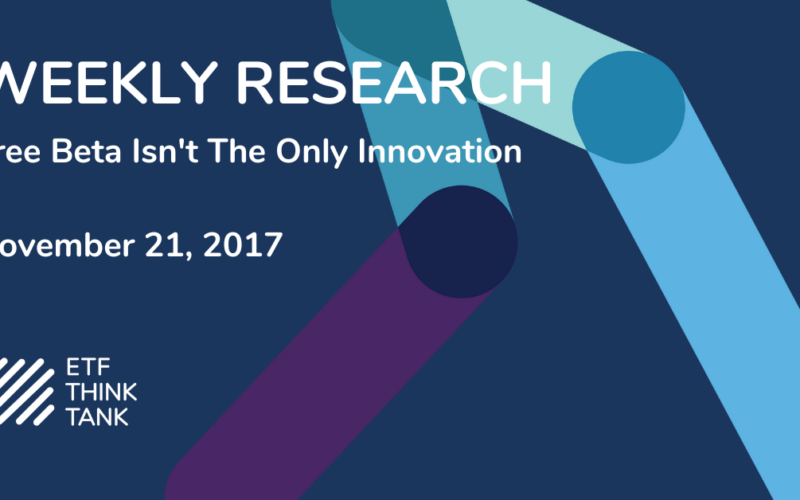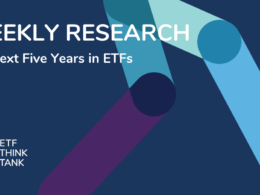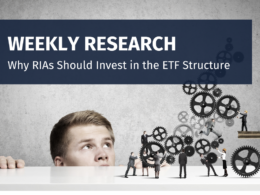Last week Reggie Brown, the Godfather of ETFs, hosted the Cantor ETF Investment Revolution conference in Austin Texas. In his key note speech, Reggie projected that global ETF assets will climb to $10 trillion over the next 7 years because they are simply “mutual funds with benefits”.
The conference continued with some spectacular presenters including Michael Arone from SSGA, who tackled the “ETF Bubble” question with an aggressive counterpoint by suggesting that we are actually reaping the benefits of the imploding “Active Bubble”. In this stimulus fueled equity rally, passive investors have generally benefited more than active investors. This circumstance threatens old Wall Street beliefs and wallets, therefore there is a steady barrage of “ETF Blaming” that equates the correlation of market returns and the growth of ETFs to the causation of a market bubble. This red herring argument obscures the reduction of many “Active Bubble” factors that have depleted investor returns for years.
Passive investing is estimated to represent about 35% of US equity markets (ETFs only 6.86%) up from 15% about 15 years ago. The markets have irrationally risen and imploded multiple times during this growth in passive allocation, just as they have performed historically. Many investors assume the rise in passive investing causing the current frothy fundamentals and “bubblicious” feel of the US equity markets. Which prevents them from seeing the benefits of the declining “Active Bubble”: lower fees, more liquidity, better tax efficiency, less concentration and potentially more aligned governance.
P.S. Google “Active Bubble” and this is what you get:
P.S.S. Google “Passive Bubble” and the top results are ads for active management, draw your own conclusions.
ETF LAUNCH OF THE WEEK
The lines between ETF issuer and ETF Strategist continue to blur. Last week Glovista joined the club of fellow ETF strategist like Sage Advisory & Riverfront by partnering with Virtus (a TETFindex constituent) to launch EMEM. Based on Glovista’s proprietary quantitative methodology, the ETF will provide diversified exposure to the most favored emerging market countries while avoiding exposure from a set of the weakest countries. Furthermore, the funds model will determine its holdings based upon macroeconomic trends, bottom-up company dynamics, and relative price momentum dynamics.
LAST WEEK’S ETF LAUNCHES
- Entrepreneur 30 ENTR
- JHancock Multifactor Small Cap ETF JHSC
- JPMorgan US Dividend ETF JDIV
- JPMorgan US Minimum Volatility ETF JMIN
- JPMorgan US Momentum Factor ETF JMOM
- JPMorgan US Quality Factor ETF JQUA
- JPMorgan US Value Factor ETF JVAL
- Oppenheimer Russell 1000 Dyn Mltfctr ETF OMFL
- Oppenheimer Russell 1000 Low Vol Fac ETF OVOL
- Oppenheimer Russell 1000 Momt Fac ETF OMOM
- Oppenheimer Russell 1000 Qual Fac ETF OQAL
- Oppenheimer Russell 1000 Size Factor ETF OSIZ
- Oppenheimer Russell 1000 Value Fac ETF OVLU
- Oppenheimer Russell 1000 Yield Fac ETF OYLD
- Oppenheimer Russell 2000 Dyn Mltfctr ETF OMFS
- Principal International Multi-Fac ETF PXUS
- iShares US Dividend and Buyback ETF DIVB
- Vanguard Total Corporate Bond ETF VTC
- Virtus Glovista Emerging Markets ETF EMEM
TETF INDEX PERFORMANCE Vs. LEADING FINANCIAL INDEXES
UNDERLYING TOP/BOTTOM 10 HOLDINGS PERFORMANCE
ETF AND MUTUAL FUND – AUM & FLOWS (IN BILLIONS)
YEARLY ESTIMATED SALES GROWTH BY SECTOR

YEARLY ESTIMATED EPS GROWTH BY SECTOR
DOMESTIC VS INTERNATIONAL EQUITY [ QUARTERLY IN BILLIONS]
FLOWS BY ASSET CLASS [ QUARTERLY IN BILLIONS]












